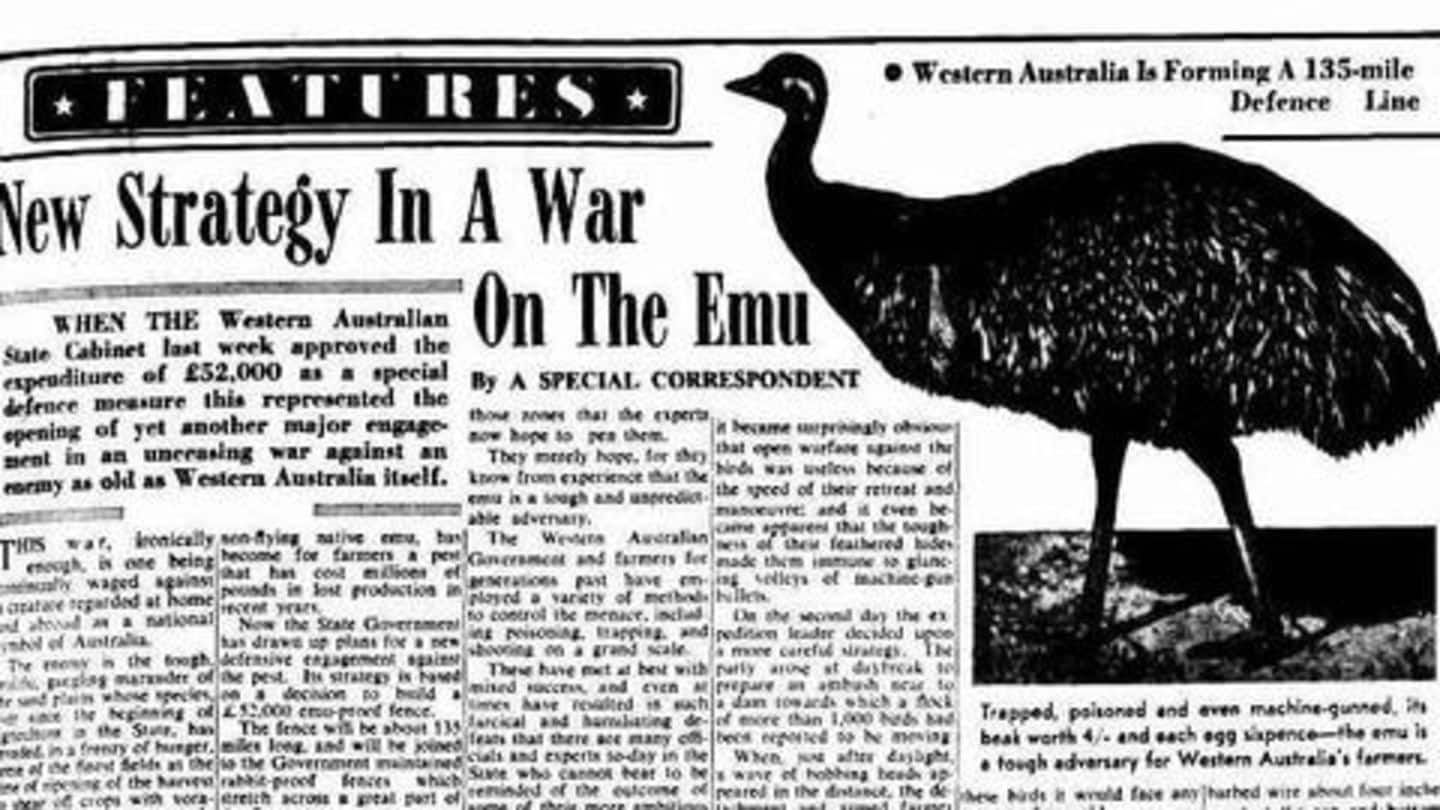
#ThisDayThatYear: Australia declared a war against birds, and lost
What's the story
Today, the emu and the kangaroo are considered to be national symbols in Australia. However, the Australian people and emus haven't always had the best of equations, and there was a time when they were sworn enemies. In fact, on this day, exactly 86 years back, the Australian Army declared a 'war' on emus...a war which they would eventually 'lose'. Here's the unbelievable story.
The setting
After WWI, Australia had an employment problem for soldiers
It was the aftermath of World War I, the Australian government was having a hard time finding employment for soldiers returning from the war. To solve the problem, the government started offering monetary incentives and free land in Australia's barren west. Many went west to become farmers. With the promise of government support, these new farmers started growing wheat.
Emus
A horde of 20,000 emus descended on western Australian farmers
A decade passed, and it was 1932. The Great Depression had already started making people's lives hard, and life for farmers in Australia's west was even harder - coupled with the depression, they faced a horde of 20,000 emus. The emus had migrated from central Australia seeking greener pastures, when they encountered one of their favourite foods: wheat. The giant, flightless birds soon started wreaking havoc.
Military involvement
Helpless soldiers-turned-farmers sought military intervention
The emus descended on the farmers, tore down fences, and devastated wheat crops. Helpless, a deputation of soldiers-turned-farmers, well aware of the efficacy of machine guns, went to meet Defense Minister Sir George Pierce seeking action. The minister agreed to dispatch machine guns along with military personnel, on the condition that the farmers and Western Australian government would bear some of the costs.
First attempt
Despite having machine guns, soldiers proved to be ineffective
A small group of soldiers, under the command of Major Meredith of Royal Australian Artillery, armed with Lewis machine guns and 10,000 rounds of ammunition, was sent to assist farmers. Military involvement began on November 2, 1932. On the first day, the soldiers spotted around 50 emus, and opened fire. The birds scattered and ran, rendering the barrage of bullets ineffective. Only a few birds were killed.
The lull
Owing to limited success, the government recalled the troops temporarily
In the days that followed, the solider had only limited success. By the fourth day of the military campaign, the soldiers reported that each emu pack seemed to have a leader that would warn the emus of the soldiers' approach. Media too, was very critical of the operation, and reported limited success, prompting the government to recall the troops on November 8.
Second attempt
The army managed to kill only 986 in the war
In the meantime, the emus continued to attack wheat crops, and farmers again asked for military support. Subsequently, the operation was restarted on November 12. In the days that followed, the military had relatively better success, and managed to gun down some emus. By the end of the 'war', on December 10, 986 emus had reportedly been killed using 10,000 rounds of ammunition.
Aftermath
In the end, the emus won
Yet, the culling of a mere 986 emus had little to no effect on the farmers' woes. Emu attacks on crops continued, and farmers from the region requested military support several times again over the years, only to be turned down. However, a bounty-system recorded much better success in culling the emu population over the years. Meanwhile, the ineffective 'Great Emu War' was criticized by many, and emus eventually became Australia's national symbol. In the end, the emus won.